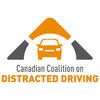 There may be no greater threat in the everyday life of Canadians than a driver with a cell phone. Texting while driving is a full-blown epidemic, and even though most Canadians say they know it’s a bad habit, our communities have had very little success in bringing the numbers down.
There may be no greater threat in the everyday life of Canadians than a driver with a cell phone. Texting while driving is a full-blown epidemic, and even though most Canadians say they know it’s a bad habit, our communities have had very little success in bringing the numbers down.
In the meantime, people are dying. Families are being devastated. The costs of collision and insurance are impacting every province. And there is a real concern that things might get worse before they get better.

Plan to End Texting Behind the Wheel
Fed up, the Canadian Coalition on Distracted Driving (CCDD) has just unveiled a 15-point plan to put a significant dent in “intextication” across the country. With 24 agencies both public and private aboard, the Coalition calls its strategy a “National Action Plan,” and it couldn’t have come soon enough.
The Distracted Driving Problem in British Columbia
Distracted driving claims an average of 78 lives each year in British Columbia alone. That makes it the second leading cause of death on our roads.
Nationwide, the numbers are even worse. Distracted driving now accounts for 8 out of 10 collisions in Canada, meaning it is the #1 risk on roadways across the country.
In the overwhelming majority of those cases (both locally and nationwide), smartphones are the source of distraction. Bad behaviours include searching for music, sending text messages, reading email, and talking on the phone.
A Look Inside CCDD’s 15-Point Plan
The Canadian Coalition on Distracted Driving launched in June 2016 with the idea that a multi-sector approach might be Canada’s only chance to bring texting behind the wheel to an end.
The group’s new National Action Plan is a collaborative effort by two dozen influential agencies. By tapping into each organization’s respective area of expertise, CCDD hopes to attack distracted driving from every angle — a full-fledged barrage.
Finer points in the plan include:
Building a massive database of powerful, easily accessible, evidence-based information that the agencies can use to persuade policymakers of the need for strong action.
Working with media outlets to expand distracted driving coverage beyond merely reporting on individual crashes.
Because experts suspect that distracted driving is seriously under reported in law enforcement data (due to confusion about what qualifies as “distracted driving”), the CCDD will work with both law enforcement and data collection agencies to standardize reporting.
Bringing leaders from the government, insurance, vehicle manufacturing, and technology sectors together to develop new technological solutions to distracted driving.
Reaching out to employers across Canada and demonstrating the real business costs of texting while driving. In this way, CCDD can encourage employers to educate or “crack down” on work-related distracted driving.
We Can Solve This Problem
The Canadian Press recently reported that 98% of people who text daily say they know the dangers of doing it behind the wheel. Nevertheless, some 75% of those respondents admit they do it anyway.
While that statistic is equal parts disheartening and frustrating, it might also have a silver lining. If awareness is the first step toward solving a problem, we’re already onto Step Two.
Canadians know how dangerous this is. It’s simply a very bad habit, one we break. To that end, hope has been elusive. But with so many powerful agencies behind it (and with so many ambitious, high-level goals in its crosshairs), the CCDD’s new 15-point plan could finally begin to turn the tide on this grave threat to public safety.
McLarty Wolf is a Vancouver accident and injury attorney law firm with four decades of litigation experience and a passion for helping Canadians in conflict. Founding partners Ross McLarty and Murray Wolf fight for the rights of auto accident victims and people treated unfairly by insurance companies. Call 1-855-688-9542 for a free consultation with McLarty Wolf today.
Share This Article
This is a great idea, and one that I would endorse and support.
But how do you do that?
- Log in to post comments
It is kind of strange, that we now have distracted driving laws in place, yet the monitor smack dab in the middle of the dash, on a friends new car, is like 10 inches! She has more gadgets, buttons, switches, and doodads, than Carter has liver pills. It seems to me that the manufacturer is contributing to the problem.
Like having a 110 KMH speed limit, and driving a car that will easily do 250. Don't get me wrong, I LOVE horsepower, and a finely tuned vehicle, but theres a time and place for it, and the provincial highway ISN'T that place.
Back to my friends car, this thing has front crash avoidance, lane position monitoring, and it will parallel park on its own....why cant it police itself, and take evasive action if the driver is not paying attention? (like going into limp mode or shutting down.)
just a thought.
- Log in to post comments
- Log in to post comments

Solid thinking